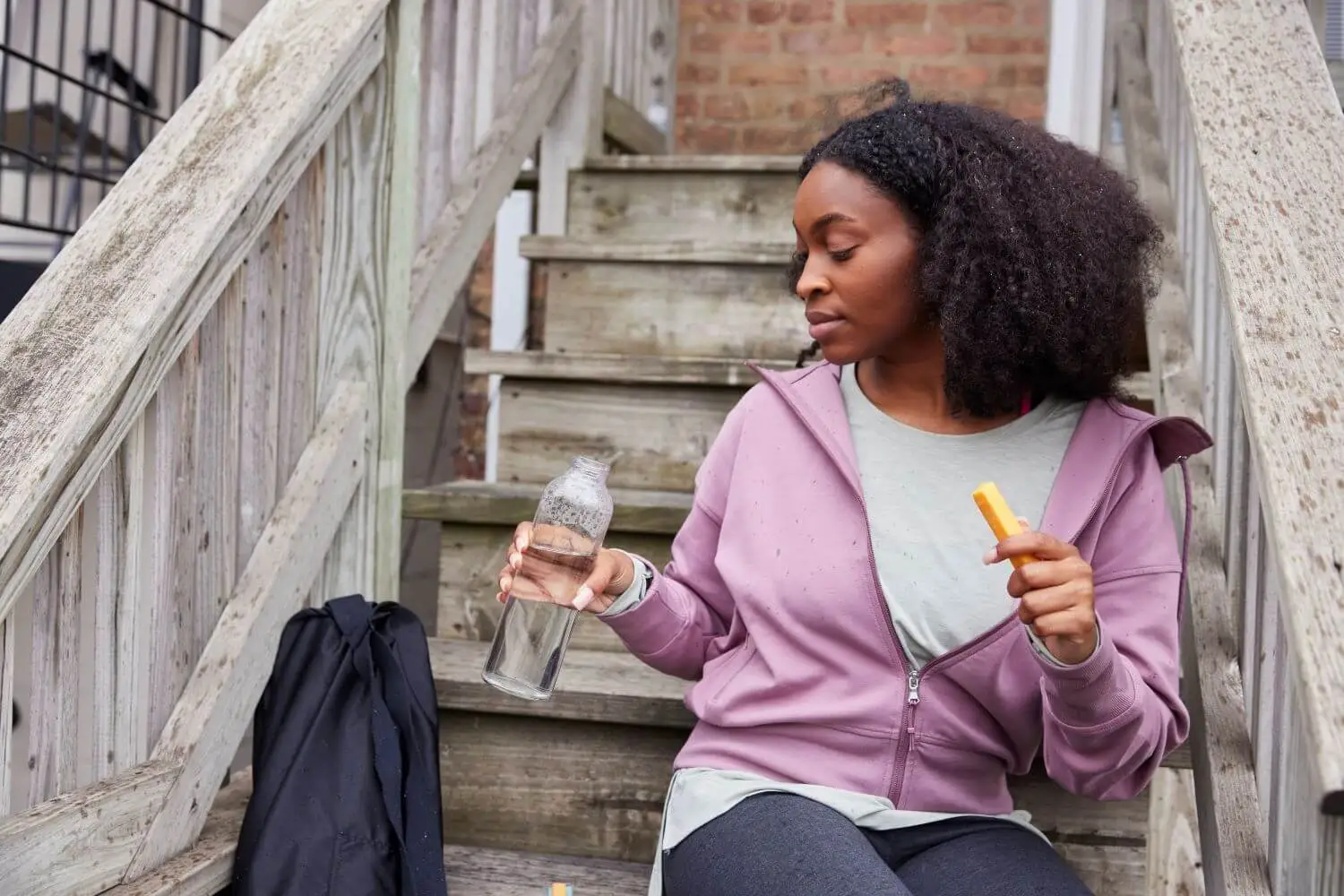Understanding High-Quality Proteins: How to Choose the Best Protein Options for Your Health
Protein is in all sorts of foods, including grains, legumes, meat, eggs, dairy foods and fish. Some people may be consuming protein without even thinking about it, no matter what kind of diet they have. Which is great! Protein is an essential nutrient our bodies need.
But not all protein is created equal. And not everyone goes out of their way to ensure they get high-quality protein. Some people may not know what it is or how it benefits them.
Keep reading to discover what makes high-quality protein so special.
What Is Protein?
Protein is an essential nutrient our bodies need to stay healthy and function properly. It is one of our body’s building blocks. Literally. Our organs, muscles, bones, nails and hair are mostly made up of protein, which is in every single one of our cells.
Like how protein helps make up our cells, amino acids make up protein. If you look at protein on a microscopic level, you’ll see a chain of amino acids that look like a folded string of beads. Once digested, protein breaks down into all these amino acids that can be restructured into whatever protein our body needs.
That’s right, there is more than one type of protein. Dairy, for instance, has two high-quality proteins — casein and whey. The protein found in fish, nuts, vegetables, milk and other foods is also different. But all protein has something in common: It gives our tissues and organs structure and, as enzymes, helps convert food into energy. This is necessary for healthy bones and muscles and even helps control blood sugar.
How Much Protein Do People Need Each Day?
While protein is necessary for everyone, not everybody needs the same amount. How much protein you should eat daily depends on certain factors such as your weight. Generally, however, adults can need 46 to 56 grams of protein per day, while athletes and those who are pregnant or breastfeeding may need even more. Older adults too — protein-rich foods can help us offset lean muscle loss due to aging, so increased protein can be a big plus to help older adults maintain muscle mass even as their appetites and calorie intakes decrease.
Of course, actually consuming all the protein you need in a day can be easier said than done. Even though it’s in all sorts of foods. “The gluten that is in wheat, rye, barley and oats, that’s a source of protein,” says sports nutritionist and registered dietitian Leslie Bonci, owner of Active Eating Advice. “Vegetables have protein. The only thing that is not providing protein to us is fruit, sweets and oil. That’s it.” The tricky thing is, most foods aren’t a significant source of protein.
Carrots and celery, for instance, have less than 1 gram of protein per 100-gram serving. So if you were trying to get protein from these two vegetables alone, you’d have to eat well over 50 servings every day to get the amount of protein you need. And that’s just not sustainable — even though they’re healthy foods. As Bonci puts it, “We can get [protein] in a lot of different ways. But most of us don’t have an unlimited calorie count.”
Fortunately, there are many high-protein foods you can choose from. Even better, you can choose high-protein dairy foods and other high-quality protein sources.
What Is Considered a High-Quality Protein?
There are 20 different amino acids, however, the amino acids that make up protein aren’t all the same Our bodies can only make 11 of them, which are called nonessential amino acids. That leaves nine essential amino acids that our bodies need but can’t create — including leucine, “which is one of the amino acids that is the driver of building muscles,” Bonci says.
So, what are high-quality proteins? Put simply, they are proteins that include all nine of the amino acids our bodies can’t create — not just some of them.
These proteins are often referred to as "complete proteins" because they contain all essential amino acids necessary for the body’s needs. Foods like dairy, eggs, meat, and soy are examples of complete proteins, helping you get a balanced intake of the vital amino acids your body requires.
Does Dairy Have High-Quality Protein?
Dairy has two high-quality proteins, also known as complete proteins: casein and whey. Casein, the dominant protein in dairy, is a high-quality protein only found in animal milks. It gets digested and releases amino acids into the bloodstream slower than whey, maximizing the repair and rebuilding of our muscles, whereas whey gets digested and releases amino acids to the muscles more quickly, boosting our muscle growth and recovery.
If you want a dairy snack with a lot of high-quality protein, you’ll have to be specific about what you reach for, because protein amounts differ based on the type of dairy food and how it’s made.
Dairy foods like cheese and yogurt may have a higher casein-to-whey proportion than milk since the process of making them involves straining out whey-containing liquids. So, thick yogurts like Greek yogurt and skyr (an Icelandic yogurt), where the liquids are strained out many times in the process, increase the amount of protein — specifically casein — per serving. Butter, on the other hand, is made primarily of fat and barely contains any protein.
Similarly, dairy foods and dairy alternatives aren’t always equivalent when it comes to protein. Because they don’t come from animals, dairy alternatives don’t contain casein at all. The only dairy alternative, recommended by the U.S. Dietary Guidelines, is fortified soy because it contains similar protein content to dairy and has a good protein quality score.
What Are the Benefits of Consuming High-Quality Proteins?
Since they contain leucine and the other eight amino acids our bodies can’t create, high-quality proteins, also known as complete proteins, come with a lot of benefits, including the following:
- Improved muscle growth
- Faster muscle recovery
- Increased metabolism
- Prolonged sense of fullness
And if there are high-quality proteins, there must also be low-quality proteins. These proteins can also benefit you, but they don’t do so as effectively. To reap the full benefits protein has to offer, it’s best to turn to foods like Greek yogurt, salmon, eggs and other high-quality protein foods in addition to having a well-rounded and diverse diet.
Dairy Sources of High-Quality Proteins
Ready to add high-quality proteins to your diet? Below are some examples of high-quality protein dairy foods to explore:
- Milk (including lactose-free milk)
- Cheese
- Yogurt
- Greek yogurt
- Kefir
- Low-fat cottage cheese
It’s also worth considering combining these dairy foods with fruits, whole grains, and vegetables, be it adding blueberries to your yogurt, fueling with whole-grain cereal and milk, or dipping carrots and celery in a cottage cheese dip. This helps build a well-rounded dish, combining high-quality protein, fiber and a variety of micronutrients. “I really like the idea of plant inclusiveness,” Bonci says. “It’s the perfect marriage. … If I mix the dairy with the plant-based foods, great! Because now I know that I’m getting my quality met, but I’m not going to exceed what my calorie needs are.”
How to Choose The Best Proteins: High-Quality Protein Options for Your Diet
Choosing the best proteins for your diet means selecting high-quality options that provide essential nutrients and are easily absorbed by your body. Dairy products like milk, cheese, and yogurt are excellent examples of high-quality proteins, as they contain all nine essential amino acids and have a high digestibility score. Eggs, lean meats, and plant-based proteins like soy also rank among the best proteins due to their nutritional profiles and health benefits.
When choosing the best proteins, consider their amino acid content and digestibility. Dairy proteins are particularly beneficial because they are versatile, rich in calcium, and provide a complete range of essential amino acids. Incorporating a variety of these high-quality protein sources into your meals can help support muscle growth, bone health, and overall well-being.
- Look for Complete Proteins: Choose foods that provide all nine essential amino acids, such as dairy products, eggs, soy and lean meats, to help your body gets the nutrients it needs.
- Prioritize Digestibility: Opt for proteins with high digestibility scores, like dairy and eggs, which are efficiently absorbed and utilized by the body.
- Incorporate a Variety: Mix animal and plant-based sources, such as dairy, lean meats, quinoa, and soy, to get a diverse range of nutrients and health benefits.
- Consider Health Goals: For muscle building, focus on high-quality proteins like dairy, which support muscle repair and growth. For overall health, aim for nutrient-dense options that provide additional benefits, like vitamins and minerals.
- Choose Nutrient-Dense Options: Foods like milk, yogurt, and cheese not only offer high-quality protein but also come with essential nutrients like calcium, vitamin D, and B vitamins for added health benefits.
What Is a Complete Protein? Definition and Benefits
A complete protein contains all nine essential amino acids that your body cannot produce on its own. Foods like dairy, eggs, meat, quinoa, and soy are examples of complete proteins. Including these in your diet ensures helps you receive all the essential nutrients needed that support muscle growth and recovery, immune support, weight management, and overall health.
High-Quality Proteins are evaluated based on their profile, digestibility and how efficiently the body uses them. These proteins provide a source of essential amino acids with high bioavailability. Foods like eggs, dairy, and lean meats are considered high-quality proteins. Opt for high-quality proteins when you want a nutrient-dense option that is easily absorbed by the body, supporting overall health and vitality.
Complete Protein vs. High-Quality Protein: What’s the Difference?
While both complete and high-quality proteins are vital for a healthy diet, they are not the same. A complete protein contains all nine essential amino acids, whereas high-quality proteins are efficiently digested and utilized by the body. Foods like dairy, eggs, and meat are both complete and high-quality proteins, offering the full range of amino acids and maximum nutritional benefits. Understanding these differences can help you choose the best protein sources for your health goals.
Eat More Foods With High-Quality Proteins
Want to maximize your health? You need the nine essential amino acids your body can’t create on its own. This means you need high-quality protein, not just any protein. So go get it! Lactose intolerance and other dietary restrictions shouldn’t stop you. Between Greek yogurt, lactose-free milk, and even non-dairy foods like fish and eggs, there are enough sources of high-quality proteins to fit any diet. Simply choose your favorites and add them to the grocery list.


















